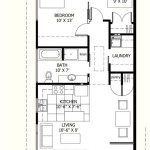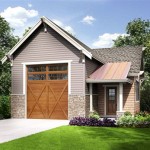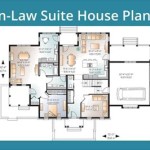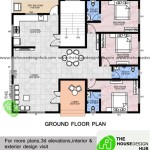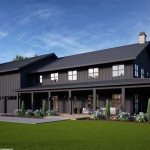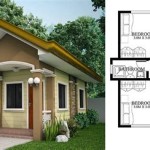House Plans With Sport Court: Integrating Recreation and Residence
The integration of a sport court into a residential property represents a significant trend in modern home design. Combining the convenience of home with the benefits of physical activity, house plans featuring sport courts cater to individuals and families prioritizing health, recreation, and social interaction. This article explores the various facets of house plans incorporating sport courts, examining their design considerations, benefits, and potential impact on property value.
A sport court, in this context, refers to a designated paved or synthetic surface area specifically designed for playing various sports. These courts are typically smaller than regulation-sized courts used for professional or competitive play but are sufficient for recreational use. Common sport court configurations include basketball half-courts, multi-sport courts suitable for tennis, volleyball, and badminton, and smaller courts designed for activities like pickleball or even a dedicated roller hockey space.
The inclusion of a sport court in a house plan requires meticulous planning and consideration of several factors, ranging from lot size and zoning regulations to budgetary constraints and aesthetic preferences. A well-designed sport court not only enhances the functionality of a home but also adds a unique element of leisure and entertainment, potentially increasing its market appeal.
Design Considerations for House Plans with Sport Courts
Designing a house plan with a sport court goes beyond simply designating a space for recreational activities. Careful consideration must be given to the layout, orientation, materials, and surrounding environment to ensure optimal functionality, safety, and aesthetic integration with the overall property.
One of the primary design considerations is the available space and its shape. The size and layout of the lot significantly influence the dimensions and orientation of the sport court. Irregularly shaped lots may require custom designs that creatively utilize available space. In cases where space is limited, a multi-sport court that can accommodate different activities within the same footprint may be the most efficient solution. Determining the primary sport or activities to be played on the court is crucial for sizing the court appropriately. A basketball half-court requires different dimensions compared to a court intended for tennis or volleyball.
The orientation of the sport court should also be carefully considered in relation to the sun’s path to minimize glare and heat exposure during peak playing hours. Ideally, the court should be oriented in a north-south direction to minimize direct sunlight exposure in the morning and afternoon. In hotter climates, providing shade through strategically placed landscaping or a partial roof structure can further enhance the playing experience.
The choice of materials for the court surface is another critical aspect of the design. Common surface options include asphalt, concrete, and synthetic materials such as acrylic or polypropylene tiles. Asphalt and concrete are durable and cost-effective options, but they can be hard on joints and may require periodic resurfacing. Synthetic surfaces offer better shock absorption, reduce the risk of injuries, and come in various colors and textures. The specific material chosen should be based on factors such as budget, maintenance requirements, performance characteristics, and aesthetic preferences.
Safety is paramount in the design of any sport court. Providing adequate fencing or netting around the court is essential to prevent balls from straying into adjacent properties or causing damage. The height of the fencing should be appropriate for the types of activities to be played on the court. Additionally, incorporating features such as padding on goalposts or other potentially hazardous structures can further enhance safety.
Lighting is crucial for enabling nighttime play and improving visibility. Adequate lighting fixtures should be strategically placed around the court to provide even illumination without creating glare. LED lights are a popular choice for sport courts due to their energy efficiency, long lifespan, and ability to provide bright, consistent light. The lighting design should also consider the impact on neighboring properties to minimize light pollution.
Finally, the design of the sport court should integrate seamlessly with the overall landscape design of the property. Incorporating landscaping elements such as trees, shrubs, and flowerbeds can enhance the aesthetics of the court and provide a natural buffer between the court and the surrounding environment. Considerations for drainage are also critical to prevent water from accumulating on the court surface, which can create a safety hazard and shorten the lifespan of the court.
Benefits of Incorporating a Sport Court into a House Plan
The inclusion of a sport court in a house plan offers a multitude of benefits, ranging from promoting physical activity and fostering social interaction to increasing property value and enhancing the overall quality of life. These benefits make sport courts a desirable feature for many homeowners.
One of the most significant benefits of having a sport court at home is the promotion of physical activity and a healthy lifestyle. With a convenient and accessible recreational space, individuals and families are more likely to engage in regular exercise and outdoor activities. This can lead to improved cardiovascular health, weight management, and overall physical well-being. A sport court eliminates the need to travel to a gym or public park, making it easier to incorporate physical activity into daily routines.
Sport courts also provide a venue for social interaction and family bonding. Whether it's a friendly game of basketball with friends, a family volleyball match, or a casual practice session, a sport court creates opportunities for people to connect, compete, and have fun together. It can serve as a gathering place for neighborhood kids, a venue for hosting parties, or simply a space for family members to spend quality time together. The presence of a sport court can foster a sense of community and strengthen relationships.
The addition of a sport court can significantly enhance the entertainment value of a home. It provides a unique and appealing feature that can be used for various recreational activities. It can be customized to accommodate different sports and activities, making it a versatile and engaging space for both children and adults. A sport court can also serve as a focal point for outdoor entertaining, providing a fun and active alternative to traditional backyard activities.
A well-designed and properly maintained sport court can also increase the property value of a home. It is a desirable feature that appeals to a wide range of potential buyers, particularly those with active lifestyles and families with children. The perceived value of a sport court can vary depending on factors such as the size, quality of materials, location, and overall design. However, in general, a sport court can add a significant premium to the selling price of a home.
Beyond the tangible benefits, a sport court can also contribute to the overall quality of life for homeowners. It provides a convenient and accessible outlet for stress relief, relaxation, and enjoyment. Engaging in physical activity on a sport court can help reduce stress levels, improve mood, and enhance cognitive function. It can also provide a sense of accomplishment and satisfaction, particularly when mastering new skills or achieving fitness goals. The presence of a sport court can create a more vibrant and enriching living environment.
The maintenance requirements for a sport court can vary depending on the materials used and the level of use. However, in general, sport courts require minimal maintenance compared to other outdoor features such as swimming pools or elaborate landscaping. Regular sweeping or hosing down the court surface is typically sufficient to keep it clean and free of debris. Periodic resurfacing or repairs may be necessary to address wear and tear, but these are relatively minor expenses compared to the overall value and enjoyment that a sport court provides.
Impact on Property Value and Zoning Regulations
The integration of a sport court into a residential property can have a multifaceted impact on its value and is subject to various zoning regulations. Navigating these aspects is crucial for maximizing the benefits of adding a sport court while remaining compliant with local laws.
A sport court can positively influence property value by adding a desirable amenity that appeals to a specific demographic. Families with children and individuals who prioritize an active lifestyle are often drawn to properties offering recreational facilities. The perceived value can be amplified if the court is well-maintained, aesthetically pleasing, and designed to accommodate multiple sports or activities. However, the actual increase in property value is also contingent upon factors such as the overall condition of the property, neighborhood characteristics, and prevailing market conditions. A poorly designed or maintained court may not significantly increase value, and in some cases, may even detract from it.
Zoning regulations play a significant role in determining the feasibility and permissibility of constructing a sport court on a residential property. These regulations often dictate aspects such as setbacks, height restrictions, noise levels, and permissible land use. Setbacks refer to the minimum distance a structure must be from property lines, and they can significantly influence the placement and size of the sport court. Height restrictions may apply to fencing or lighting fixtures, limiting the ability to install tall backboards or powerful lights for nighttime play.
Noise ordinances are another critical consideration. Activities on a sport court can generate noise that may disturb neighbors, especially during evening hours. Zoning regulations may impose restrictions on noise levels during certain times of the day, requiring homeowners to take measures to minimize noise pollution. This can involve installing sound barriers, limiting playing hours, or using noise-absorbing materials in the court’s construction.
Furthermore, some zoning regulations may classify sport courts as accessory structures, which are subject to specific rules and limitations. This classification can affect the permitting process and the overall design of the court. Homeowners should consult with local zoning officials or planning departments to determine the specific regulations applicable to their property before commencing construction. Obtaining the necessary permits and approvals is essential to avoid potential fines, legal issues, or even the forced removal of the sport court.
Beyond zoning regulations, homeowner association (HOA) rules may also govern the construction and use of sport courts. HOAs often have their own set of covenants, conditions, and restrictions (CC&Rs) that regulate various aspects of property development and usage within the community. These CC&Rs may address issues such as the appearance of the court, the materials used in its construction, and the hours of operation. Homeowners should carefully review the HOA rules before building a sport court to ensure compliance and avoid potential conflicts with the association.
The impact of a sport court on property value and the stringency of zoning regulations can vary depending on the location of the property. Urban areas with high population density may have stricter zoning regulations and higher property values, while rural areas may have more lenient regulations and lower property values. Understanding the local context is crucial for making informed decisions about the feasibility and potential benefits of adding a sport court to a residential property.

Luxurious Craftsman House Plan With Optional Sports Court 290000iy Architectural Designs Plans

New American House Plan With Sport Court And Angled Garage 22575dr Architectural Designs Plans

Craftsman House Plan With Sports Court 14625rk Architectural Designs Plans

House 3 Story Craftsman With Sport Court Plan Green Builder Plans

Exclusive Craftsman Home Plan With Indoor Sports Court 73391hs Architectural Designs House Plans

House Plans With Indoor Basketball Court How To Costs

Cottage House Plan With 4 Bedrooms And 3 5 Baths 7045

Spacious Contemporary Country House Plan With Sports Court 290150iy Architectural Designs Plans

House Plan 92351 Craftsman Style With 5077 Sq Ft 5 Bed 4 Bath

Exclusive Spacious House Plan With Sport Court 61360ut Architectural Designs Plans


